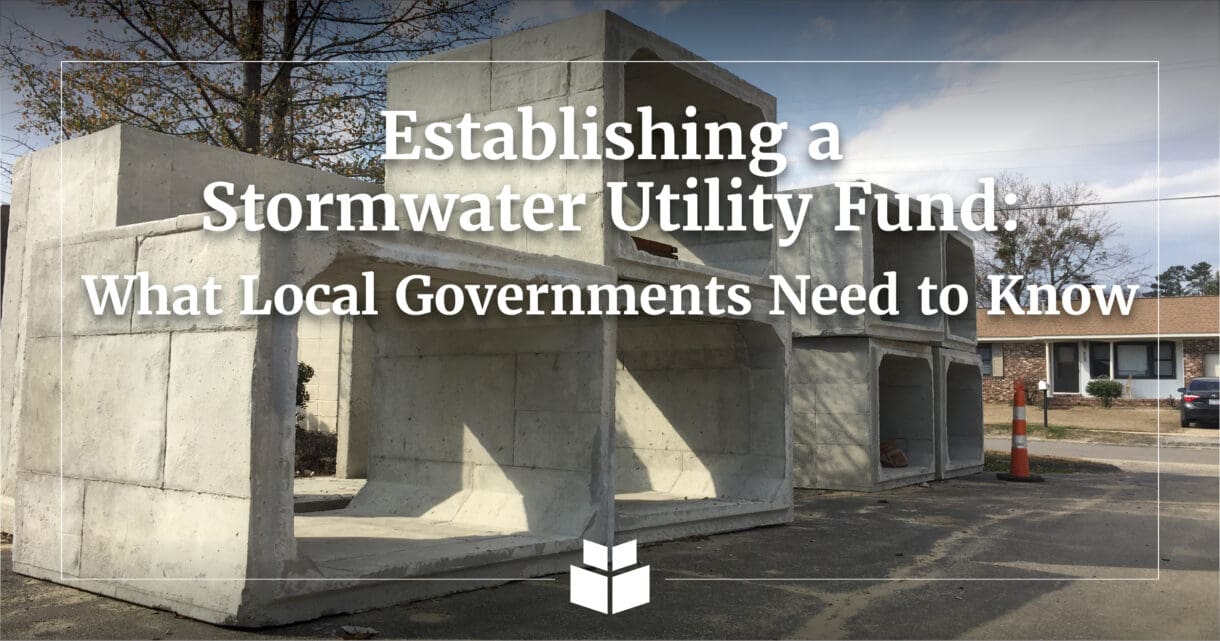
For many communities, managing stormwater is often seen as a low priority, trailing behind concerns about water, wastewater, and roads. Conventional wisdom has even held there is no need to manage stormwater, since it’s “just water flowing downhill.” But amidst rising concerns about water quality as well as flooding, an active stormwater management strategy—particularly one that includes a long-term financial plan—is essential. A stormwater utility fund brings together the technical and financial aspects of stormwater management for a more sustainable future.
What is a stormwater utility fund?
A stormwater utility fund is the legally allowable mechanism by which a local government may impose a fee on developed property owners to pay for the cost of handling stormwater runoff caused by impervious surfaces on their property.
A stormwater utility fund functions like a water or wastewater utility: users pay into the utility fund, and the utility uses the money to pay for ongoing operations, maintenance, repairs, and capital projects.
What are the benefits of a stormwater utility fund?
A stormwater utility fund offers similar benefits to operating a water or wastewater utility:
- The revenue earned by a stormwater utility fund pays for watershed studies and short- and long-term operational and capital improvements to the stormwater system.
- The stormwater system can become financially self-sustaining with dedicated revenues, rather than competing for revenues from the local government’s general fund.
- The financial burden of maintaining the stormwater system is distributed fairly among users.
- The existence of a dedicated fund opens up new opportunities for communities to pursue a wider range of loans and grants, particularly if matching funds are required and can be covered by the revenue generated from the utility.
How is a stormwater utility fee established?
The stormwater utility fee should be uniformly applied within the local government’s jurisdiction. It is commonly calculated using the impervious area on a developed property as a proxy to fairly represent the runoff contributed by that property. Therefore, establishing a stormwater utility fee schedule consists of two major phases:
- Analyzing the amount of impervious area
- Evaluating stormwater fee structures to choose a proportional arrangement that achieves the community’s stormwater management and financial goals.
For a guide to this process, see Establishing a stormwater utility fund: how to set fair stormwater utility fund rates
How long does it take to establish a stormwater utility fund?
Establishing a stormwater utility fund typically takes 10–12 months from the local government’s notice to proceed. The total time may vary depending on the volume and accuracy of data available, the status of the community’s Capital Improvement Plan, and the cadence of the local government approval process.
If the community is relying on state or federal funding to complete the project, then funding availability and disbursement schedules may also extend the project timeline.
Getting started
Worried your community doesn’t have enough information about its stormwater system? Concerned about the public reaction to a new fee? WithersRavenel has tackled these challenges and more for communities across the state of North Carolina. We can help you start the conversation about establishing a stormwater utility fund and achieving your stormwater goals.


